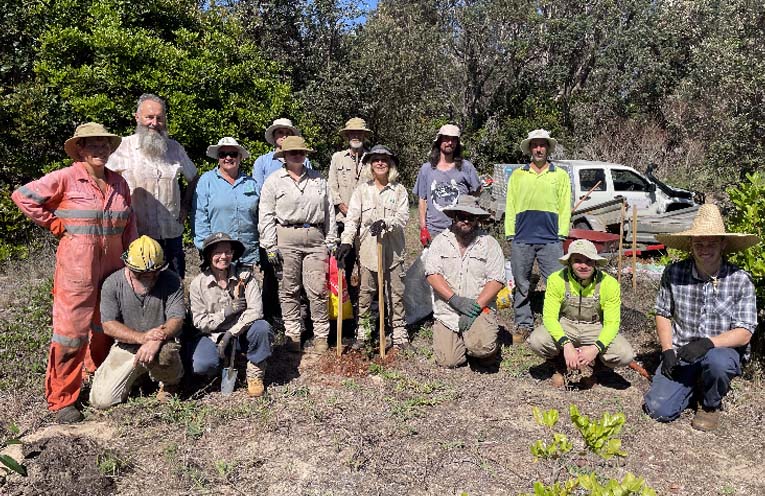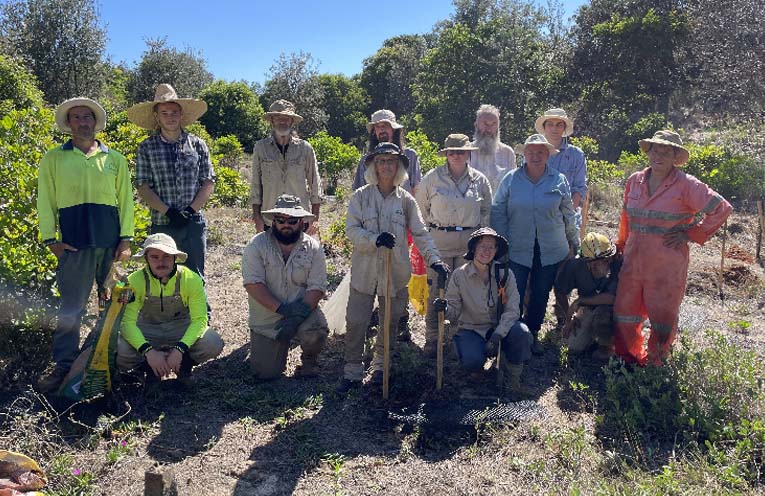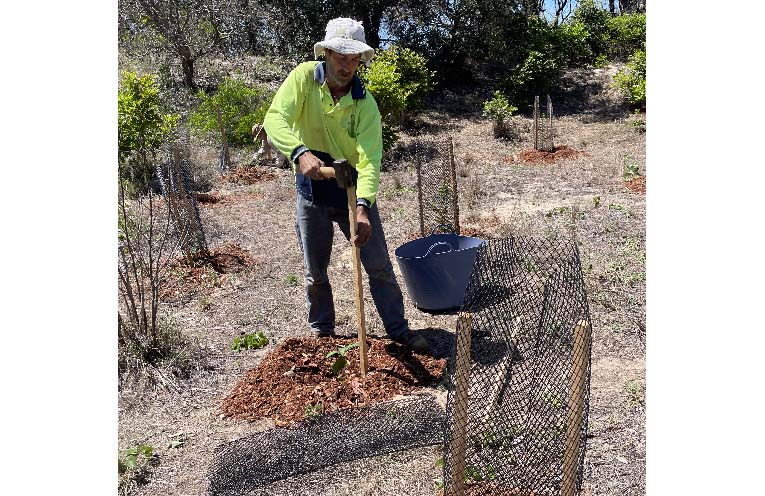
THE JALIIGIRR Biodiversity Alliance and partners have taken advantage of recent wet weather by further consolidating plantings for Grey Headed Flying Foxes.
Enrichment plantings have occurred at several key locations along the Coffs Coast and hinterland by Bellingen Landcare, Coffs Harbour Regional Landcare, Coffs Harbour and District Aboriginal Land Council, Jetty Dunecare Group and the City of Coffs Harbour.
 Advertise with News of The Area today.
Advertise with News of The Area today.It’s worth it for your business.
Message us.
Phone us – (02) 4981 8882.
Email us – media@newsofthearea.com.au
“The rain replenishes soil moisture, it assists with revegetation projects by helping the native seedlings planted to get established,” Jaliigirr project manager Justin Couper told News Of The Area.
“Prior to the consistent rain it had been really dry, which is not ideal conditions for planting.”
The Jaliigirr Biodiversity Alliance partners have rallied to plant over 5,000 trees, focusing on vital nectar and pollen producing tree species preferred by the Grey Headed Flying Fox.
“Important Grey Headed Flying Fox feed trees don’t flower every year, and winter and spring can be the time of year that can be more difficult for these Australian native megabats to find food.
“Some of the winter and spring flowering tree species planted include Forest Red Gum, Swamp Mahogany, and Broad-Leaved Paperbark,” he said.
This five-year project is focussed on more than planting feed trees however.
There is also bush regeneration work happening around some of the nationally important roosting sites for Grey Headed Flying Foxes in the area, while Coffs Harbour Regional Landcare also hosted a successful community engagement program at the Woolgoolga camp.
WIRES has funded this project to help ensure Grey Headed Flying Foxes are more secure in the wild, with increased feeding and roosting opportunities.
One of the long-term aims of the project is to reduce the impacts of heat stress through improved and expanded roosting habitat at nationally significant flying fox camps.
The conservation status of Grey Headed Flying Foxes is Vulnerable both nationally and in NSW.
“They are a vital ecological engineer within our forests as they both assist in pollination, and also in dispersing both rainforest and woodland seeds,” said Justin.
Grey Headed Flying Foxes can fly more than 20 kilometres (km) in an evening, and sometimes up to 50 km, in search of food.
“As we have lost habitat, so too have Grey Headed Flying Foxes lost roosting and feeding sites.”
The Jaliigirr Biodiversity Alliance thanks the City of Coffs Harbour bush regeneration team for its assistance and contribution to the project through the supply of mulch, watering and planting.
By Andrea FERRARI


